Back To School: What's School like around the World?
December 12, 2024
School days are some of the most important of our lives, they help to shape our future and our personalities. With back to school just around the corner, we decided to take a look into the differences in school life around the world. How do certain factors differ and how does this impact upon students, their success, and well-being? How does the UK's education system compare to other countries ways of schooling?
We've taken a look at what the average schooling is like in different global destinations.
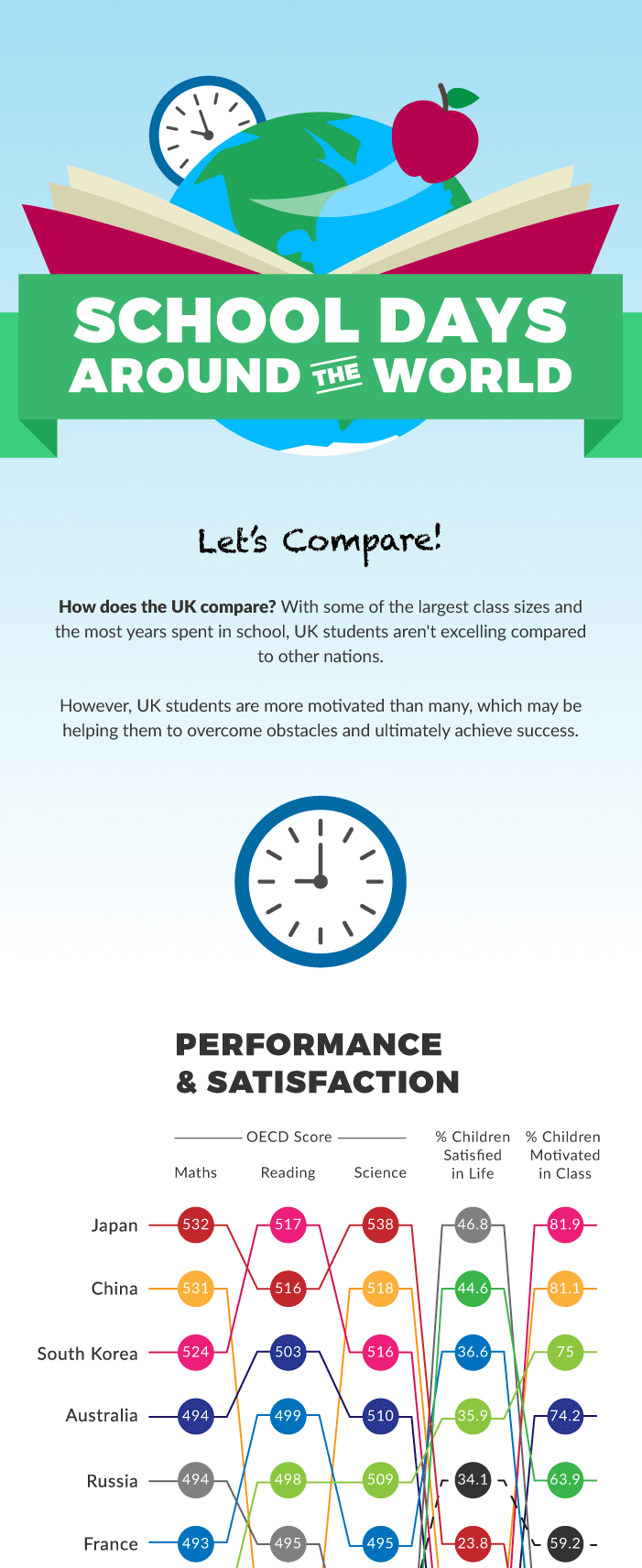
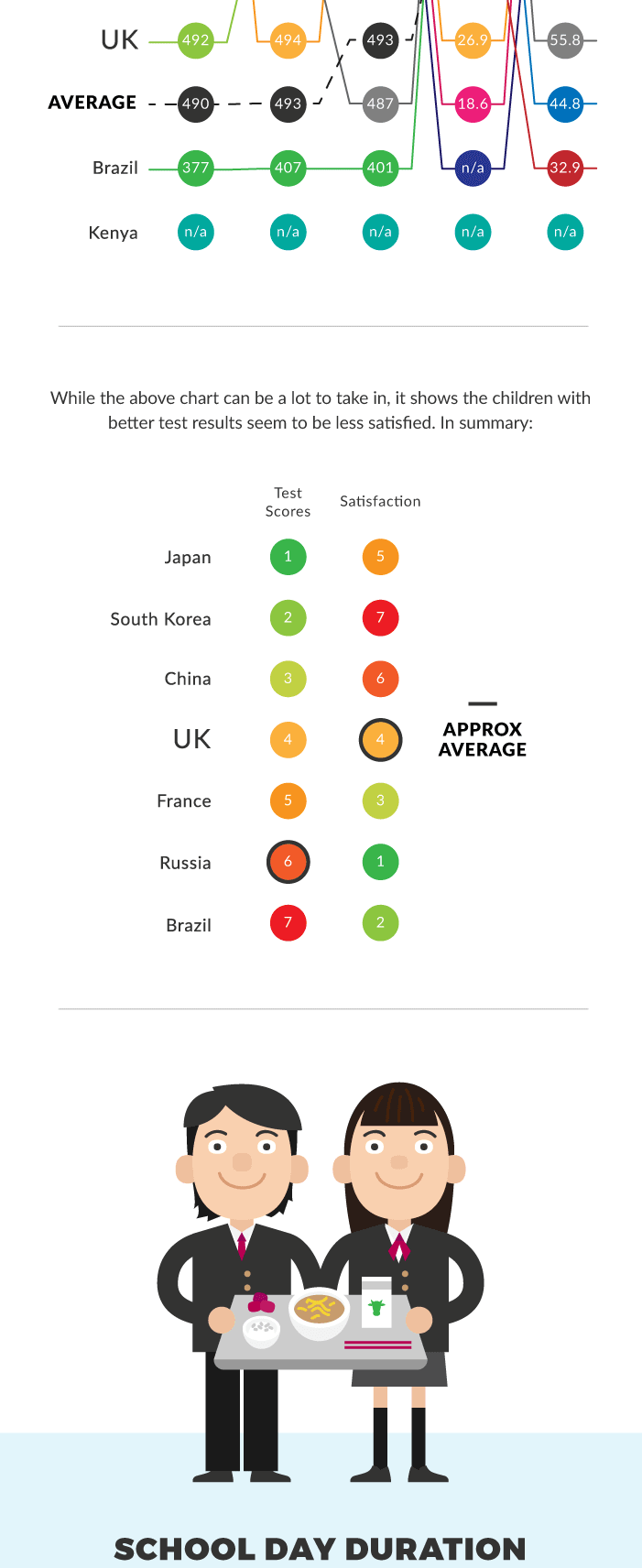
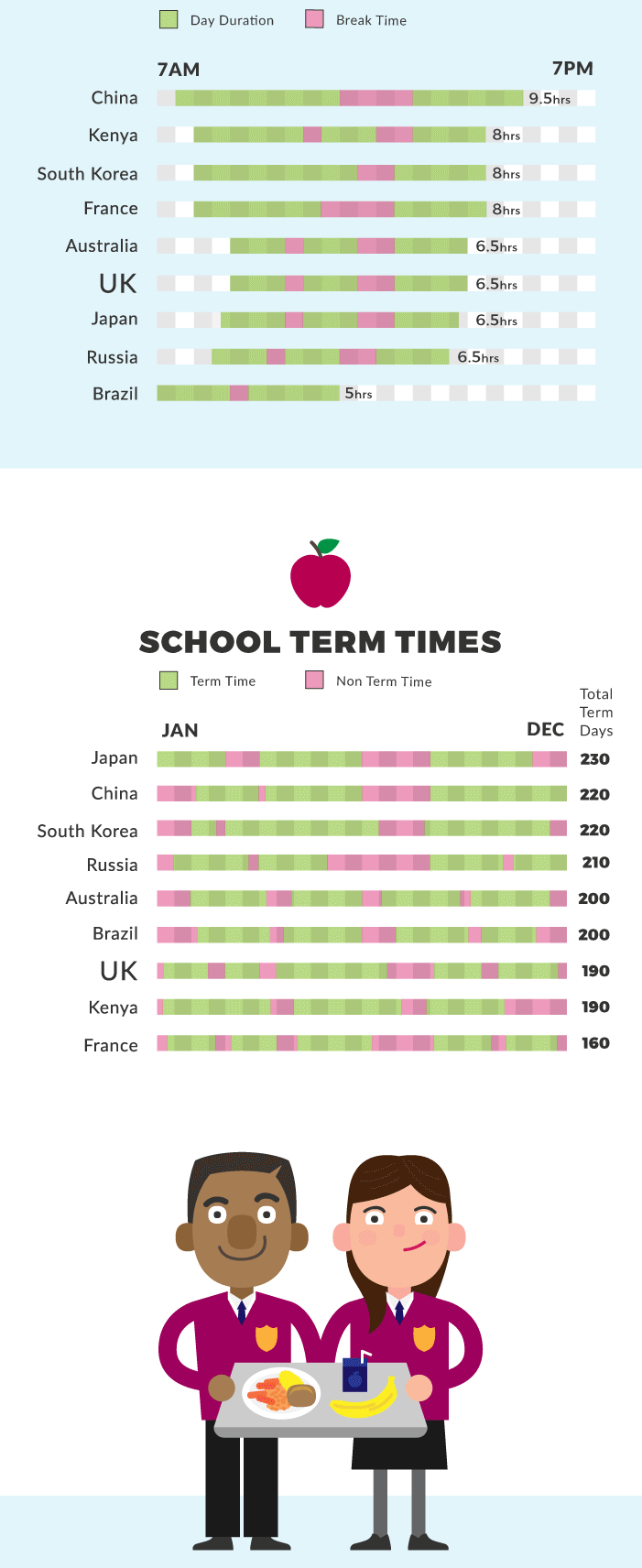
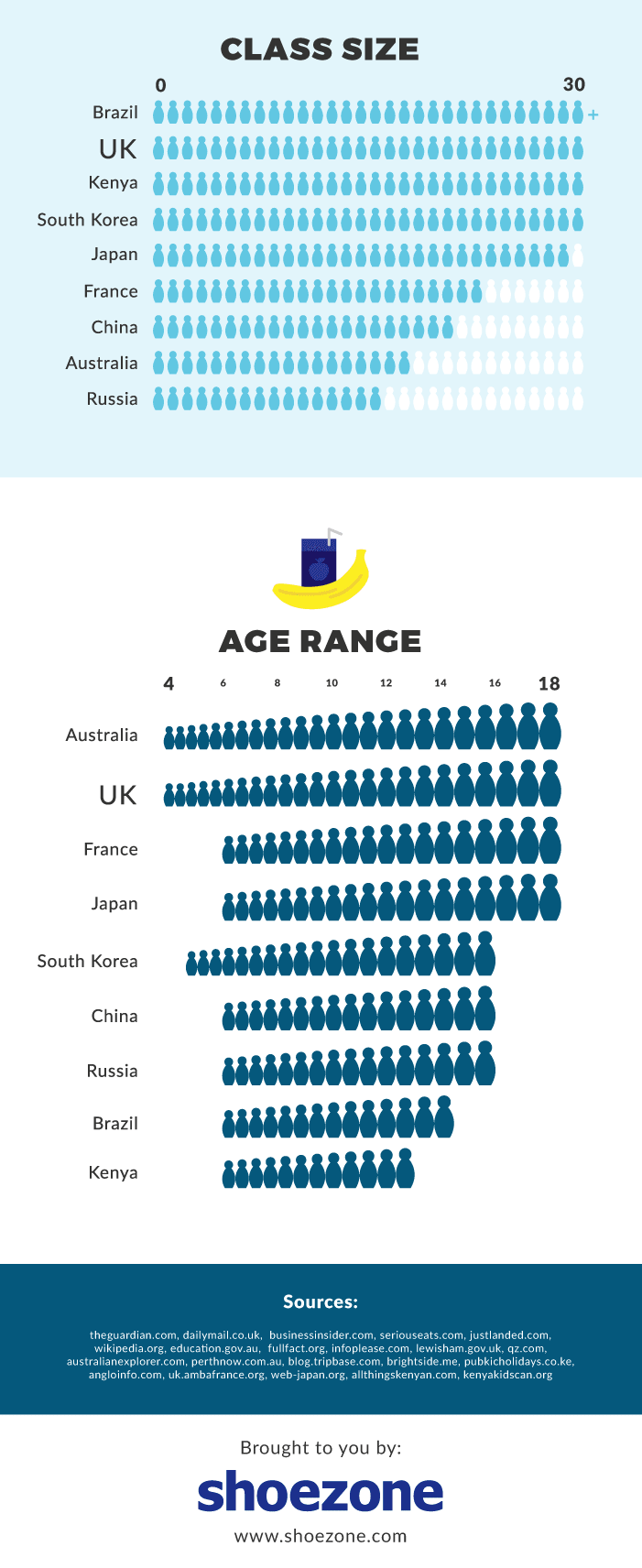
So many different factors influence school life, from hours in school per day to class size, lunch options, breaks and holidays. It's difficult to determine which of these contribute to overall academic success, motivation and life satisfaction. However, students who spend more time in academic pursuits and achieve more highly tend to show trends of less satisfaction in life. It's worth remembering that success isn't everything. Here's a more detailed look at schooling in a selection of countries across the globe:
Australia
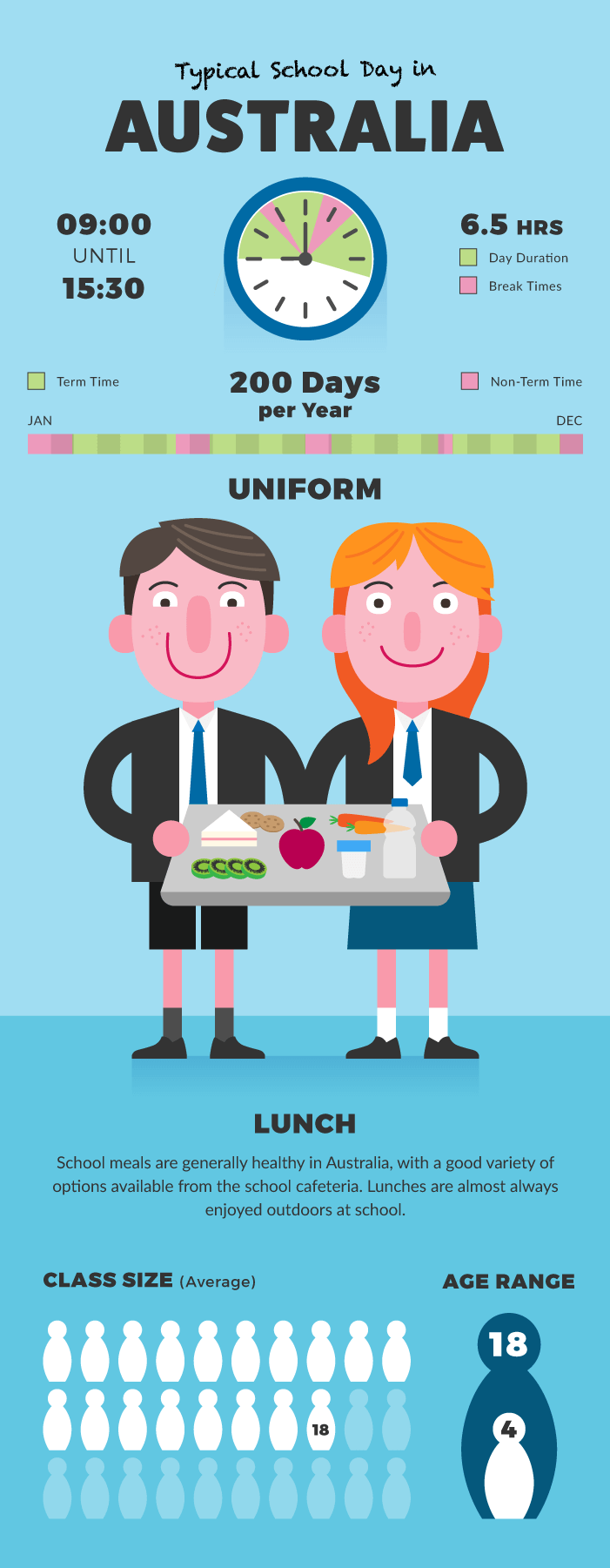
With a reputation for being a laid back nation, is this reflected in Australia's schooling? To a degree. Hours spent in school per day are fairly low and class sizes are small. However, school days per year are on the higher side, and number of years in school match the UK with the largest age range. Here's more on typical schooling in Australia:
Days Per Year: 200
Hours Per Day: 6.5
Time: 9am – 3.30pm
Term time: Late Jan – Mid Dec
Term length: 9 – 11 weeks
Average Class Size: 18
Starting Age: 4/5
Leaving Age: 17/18
Lunch/Food: Varied meals paid for from the cafeteria & eaten outside
Breaks: Recess mid-morning, followed by a longer lunch break
Uniform: Each school sets their own policy, but uniform is usually compulsory.
UK
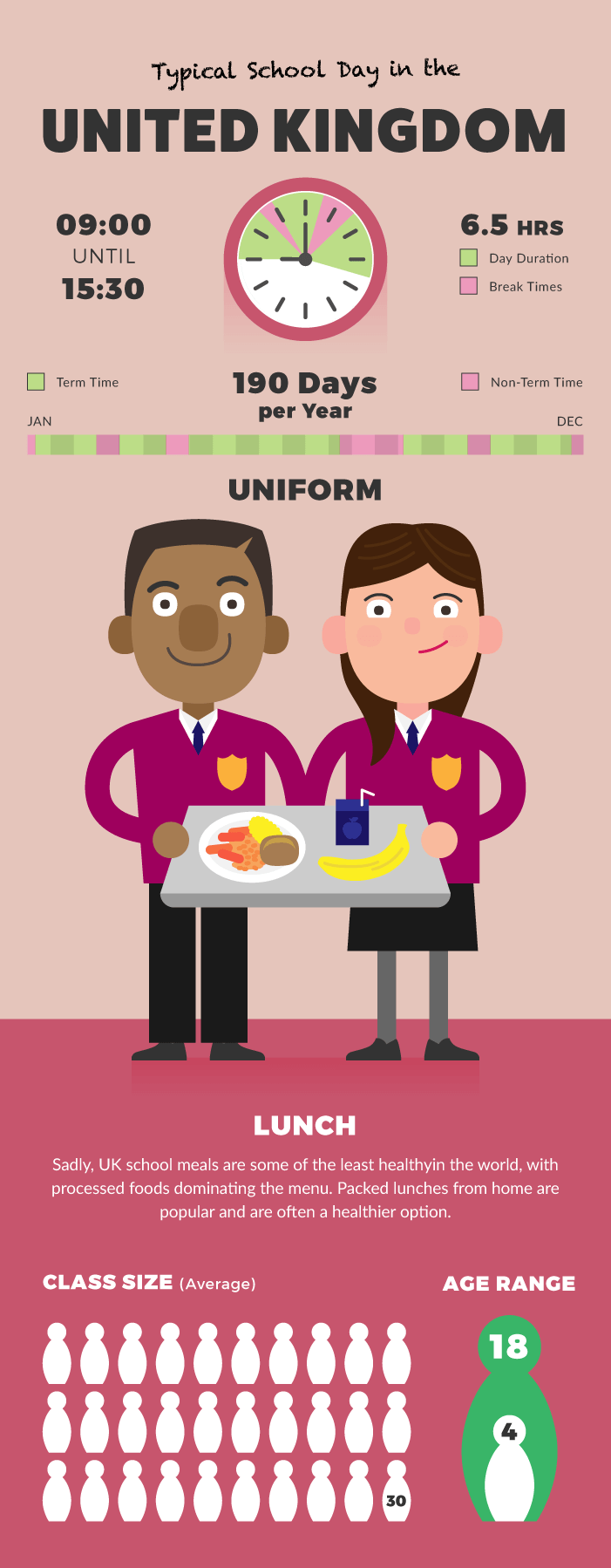
Constant debates about education seem rife in the UK, so how does our system really compare? With some of the largest class sizes and the most years in school, UK students aren’t excelling compared to other nations. Our students are more motivated than many though, which may be helping them to overcome obstacles and ultimately achieve success. Here are the stats:
Days Per Year: 190
Hours Per Day: 6.5
Time: 9am – 3.30pm
Term time: Early September – Mid July
Average Class Size: up to 30
Starting Age: 4
Leaving Age: 16 – 18
Lunch/Food: Sadly some of the least healthy options across the globe, UK school lunches often use processed foods. Lunch can be bought from the canteen or taken into school from home.
Breaks: 20 minutes morning break, followed by 45 –60 minutes lunch break. Infant schools also have an afternoon break.
Uniform: Most English schools require students to wear a uniform, but rules are more relaxed in Scotland & Wales.
Brazil
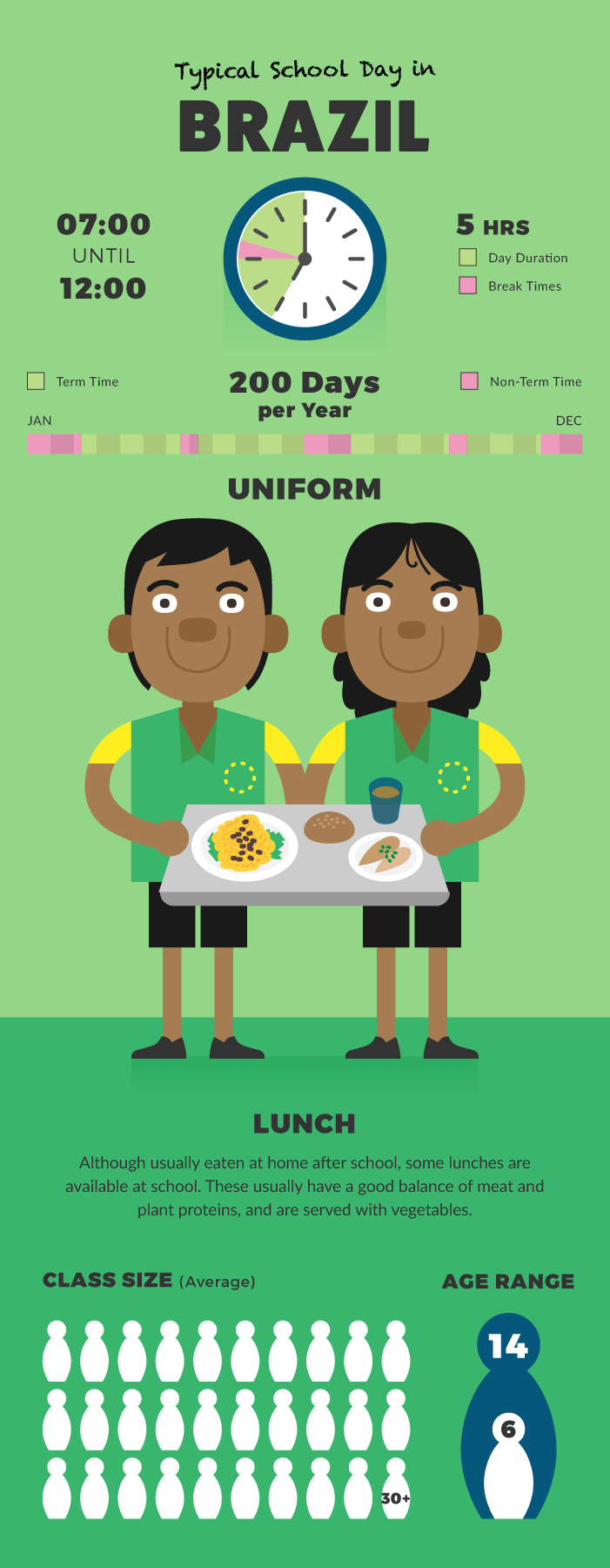
Brazilian schools are often constrained by budgets and can struggle to afford to teach the basics. This means courses such as music and art are often missed out, especially in poorer areas. Despite this, Brazilian school children are some of the most satisfied with their lives.
Days Per Year: 200
Hours Per Day: 5
Time: 7am – 12 noon
Term time: Feb – June, Aug – Sept
Average Class Size: 30 or more
Starting Age: 6
Leaving Age: 14
Lunch/Food: Usually eaten at home, after school. Lunches available at school have a good balance of meat & plant proteins & vegetables.
Uniform: Required at most schools
China
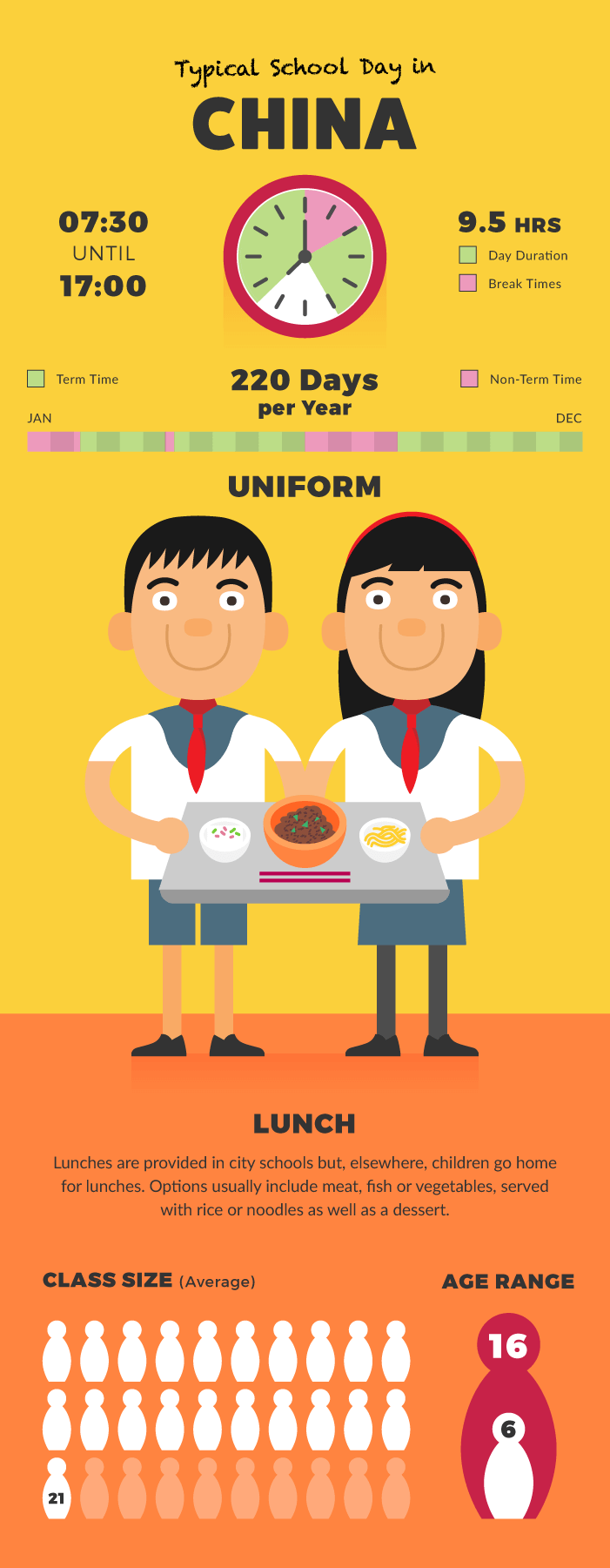
Chinese education, particularly Maths, is taught by drill. This relies on repetition and replication. Such methods seem to work well in terms of academic success particularly in Maths and science, and motivation is high. However, creativity and innovation are often overlooked so the system is currently in reform. Long school days and a high number of days in school per year may take their toll on Chinese students, as their satisfaction in life is rated as below average.
Days Per Year: 221
Hours Per Day: 9.5
Time: 7.30am – 5pm
Term time: Early September – mid July
Average Class Size: 21
Starting Age: 6/7
Leaving Age: 15/16
Lunch/Food: Provided in school in city schools, but elsewhere children go home for lunch & family time.
Breaks: 2 hour lunch break
Uniform: Almost all schools require a uniform to be worn, and many have a formal set for Mondays & special occasions.
France
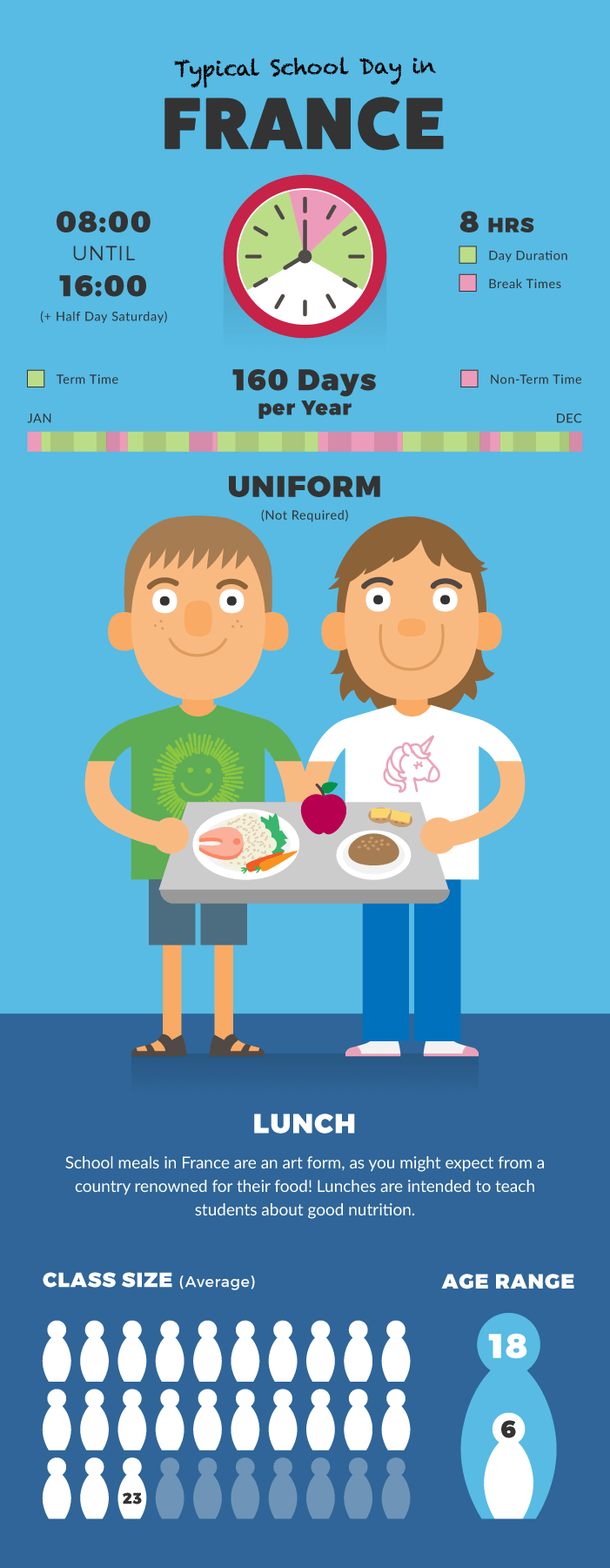
France has a fairly long school day, but students are in school for the least number of days per year. Unlike in many countries, uniforms aren't required in France which could potentially create a more relaxed environment.
Days Per Year: 162
Hours Per Day: 8
Time: 8am – 4pm (half day Saturday)
Term time: August – June
Term length: 7 weeks
Average Class Size: 23
Starting Age: 6
Leaving Age: 18
Lunch/Food: School meals in France are an art form, as you might expect from a country renowned for their food! School lunches are intended to teach students about good nutrition.
Breaks: 2 hour lunch break
Uniform: Not required
Japan
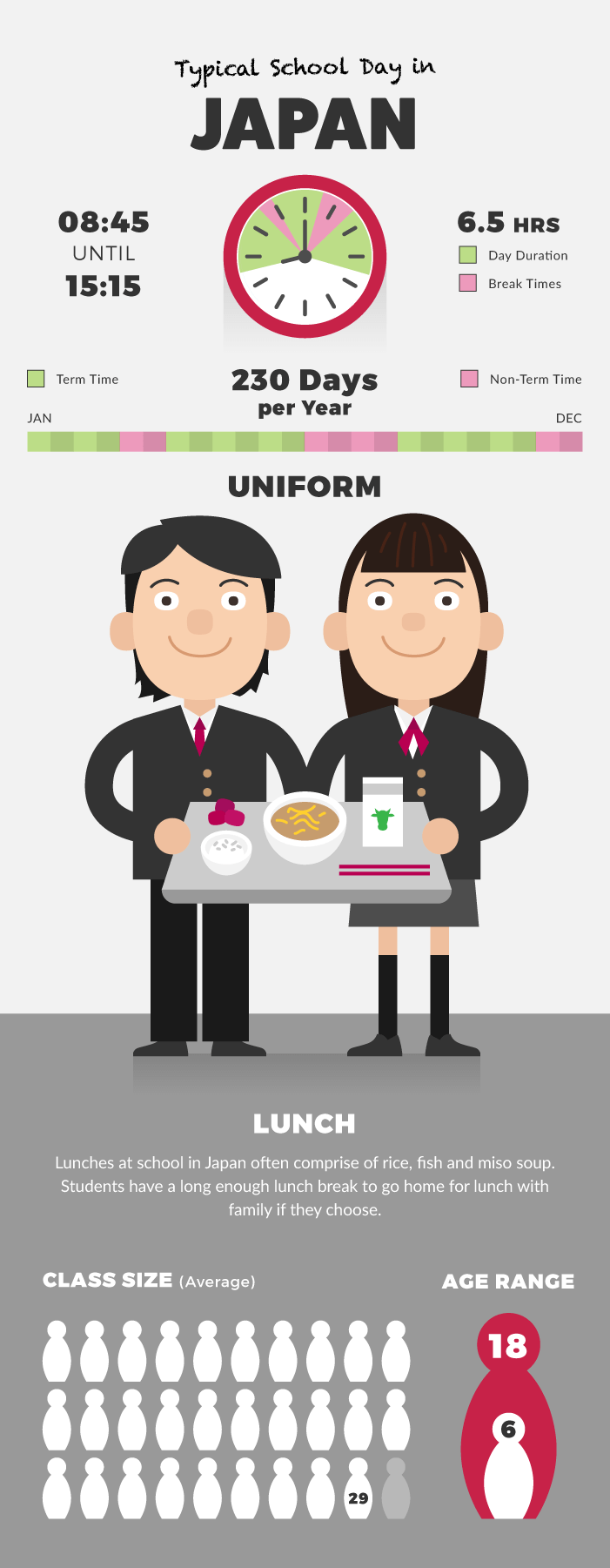
Japanese schooling is notable for extensive rules around uniform. Everything is scrutinised from accessories, make up, and hair styles to school shoes. Japanese students are high achievers who spend the most days at school throughout the year. Satisfaction and motivation, however, are well below average.
Days Per Year: 210 – 250
Hours Per Day: 6.5
Time: 8.45 – 3.15
Term time: April – March
Average Class Size: 29
Starting Age: 6
Leaving Age: 18
Lunch/Food: Lunches at school often comprise of rice, fish and miso soup. Students have a long enough lunch break to go home for lunch with family if they choose.
Breaks: Long lunch break to allow for time to go home if desired.
Uniform: Required, with extensive rules based on formal military dress.
Kenya
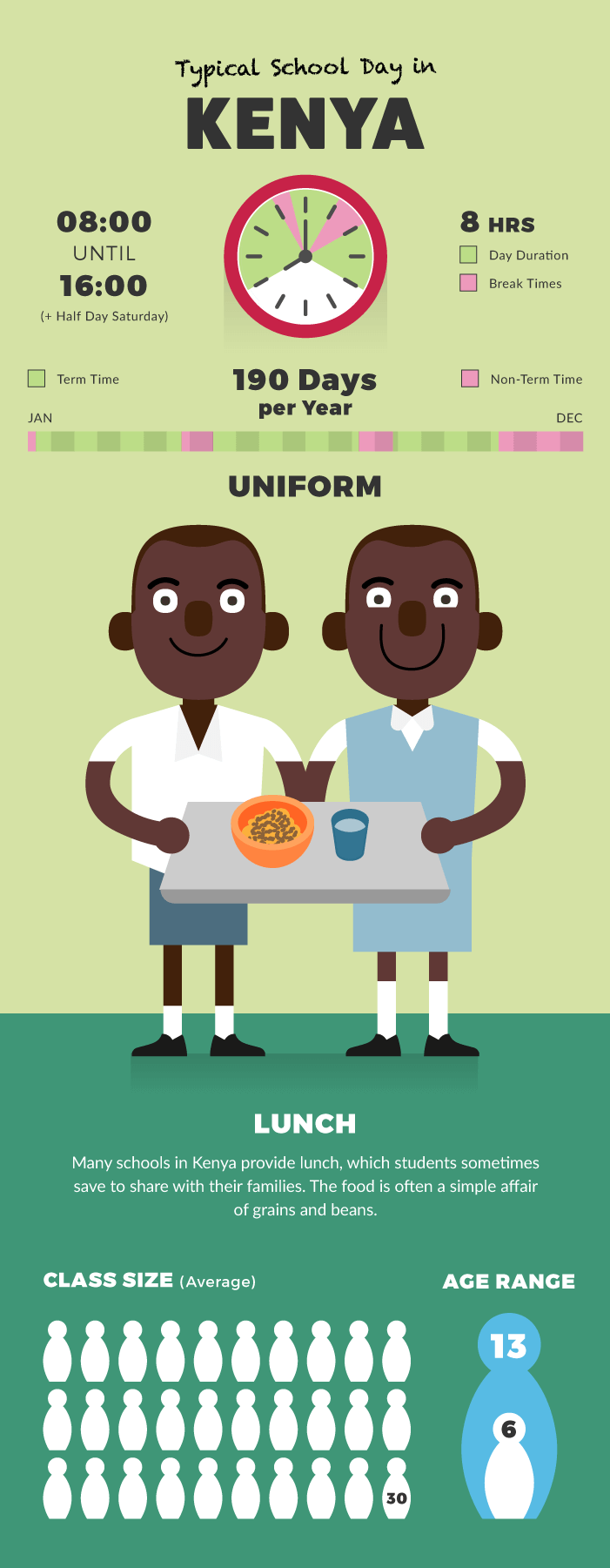
Economic and environmental hardships in Kenya make schooling more challenging than some other parts of the world. As a result, comparable data on performance, motivation, and satisfaction was not available.
Days Per Year: 190
Hours Per Day: 8
Time: 8am – 4pm
Term time: The 3 terms span the whole year with equal breaks between terms
Term length: 13 weeks
Average Class Size: 30
Starting Age: 6
Leaving Age: 13
Lunch/Food: Many schools provide lunch, which students sometimes save to share with their families.
Uniform: Appropriate uniform must be worn for school in Kenya, and those who do not adhere to these rules risk dismissal. For some families uniforms are unaffordable, and some children can only get access to uniforms and school supplies via a sponsorship programme.
Russia
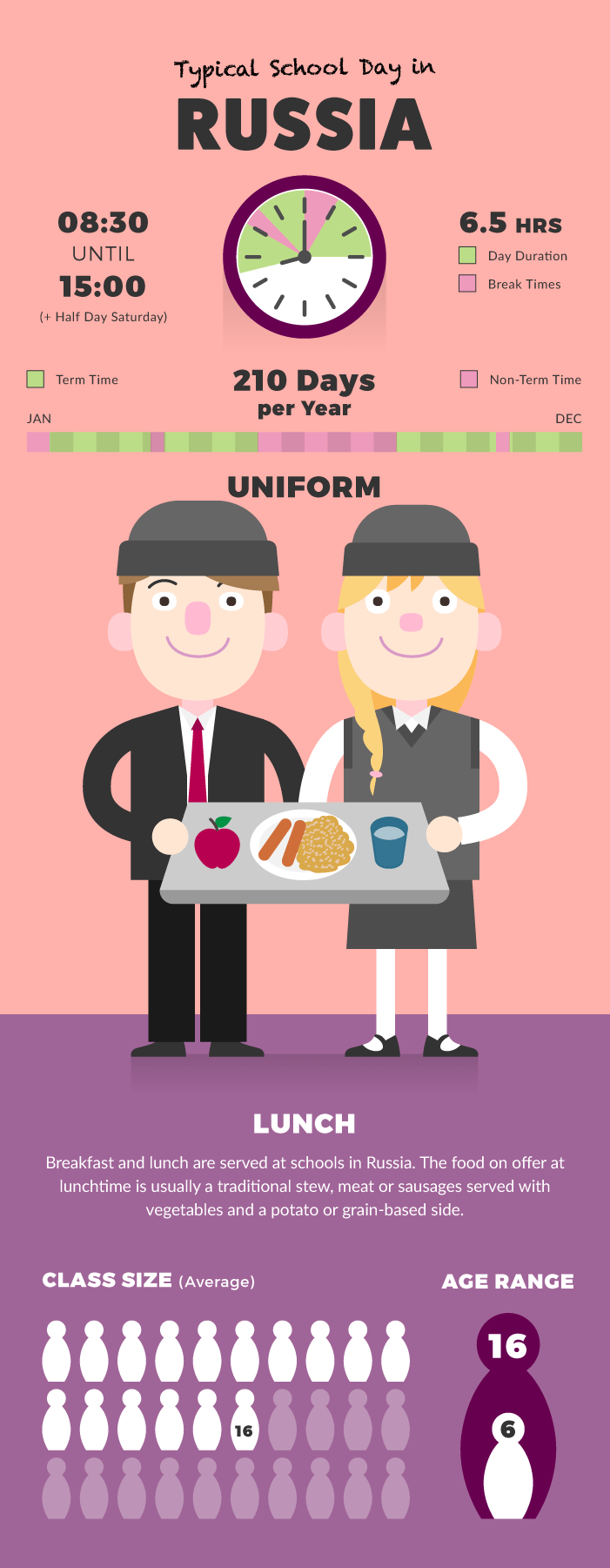
Students in Russia stay together in the same class from their first year of school until their last year of mandatory education. The stand out finding in Russia is that classes are typically very small, which allows for Russian children are the most satisfied in life of the cross section we investigated.
Days Per Year: 211
Hours Per Day: 6.5
Time: 8.30am – 3pm
Term time: September – Late May
Average Class Size: 16
Starting Age: 6
Leaving Age: 16
Lunch/Food: breakfast is provided until 12pm, lunches after 12pm are paid for.
Uniform: Not required until a recent law in 2013. Each school can choose its uniform.
South Korea
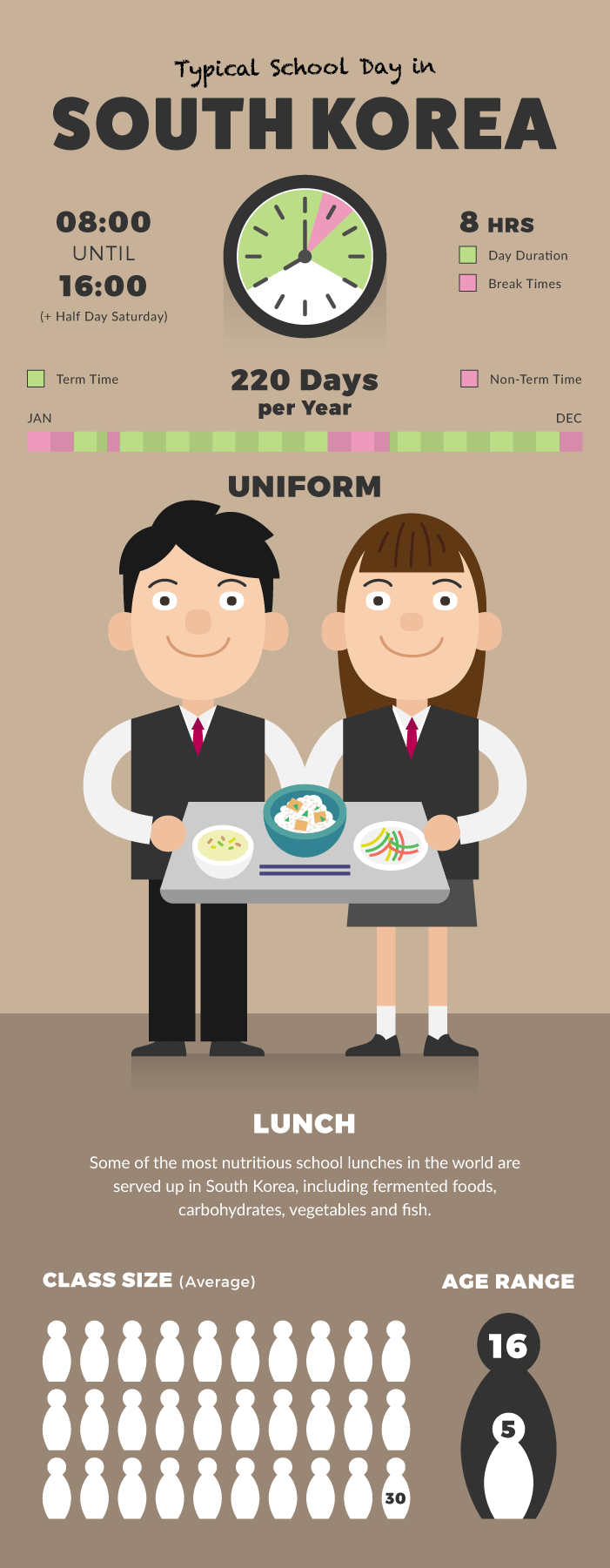
South Korea's school day is quite long, and many students stay on or return later in the evening for further study sessions or activities. Students also spend much of their year in school, with limited holiday time. Performance and motivation are high, but life satisfaction is below average for these students.
Days Per Year: 220
Hours Per Day: 8
Time: 8am – 4pm
Term time: March – February
Average Class Size: 30
Starting Age: 5
Leaving Age: 16
Lunch/Food: Some of the most nutritious school lunches, including fermented foods, carbohydrates, vegetables and fish.
Uniform: Government provided uniforms are required.
If you are in need of school shoes, check out our girls school shoes and boys school shoes range.
Check out the shoezone blog for more style tips and footwear suggestions for every occasion.